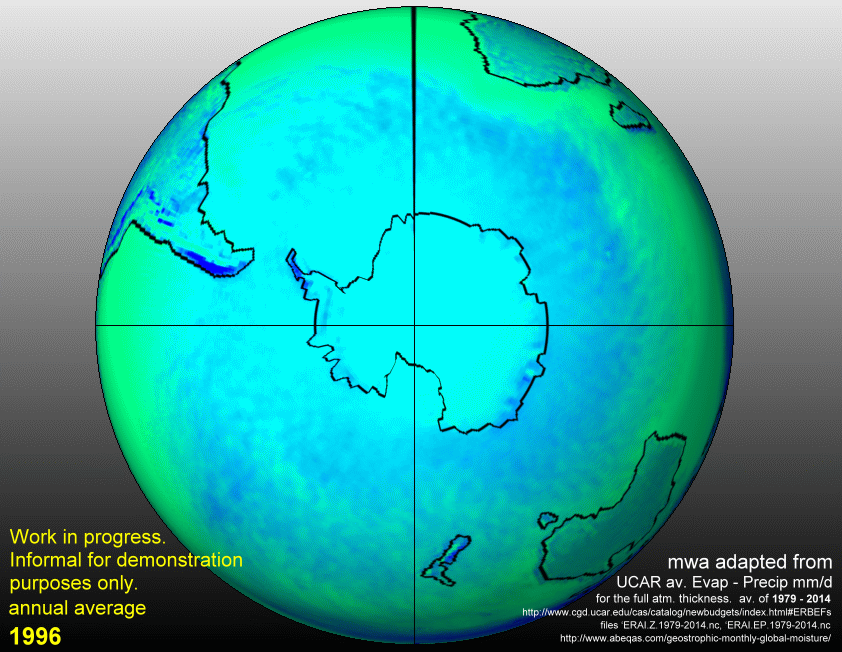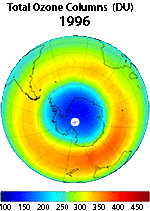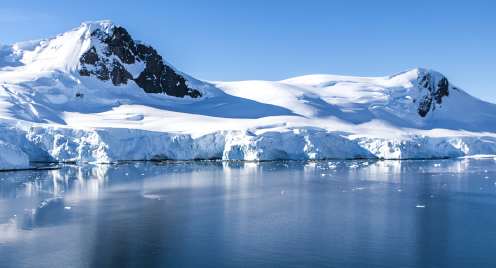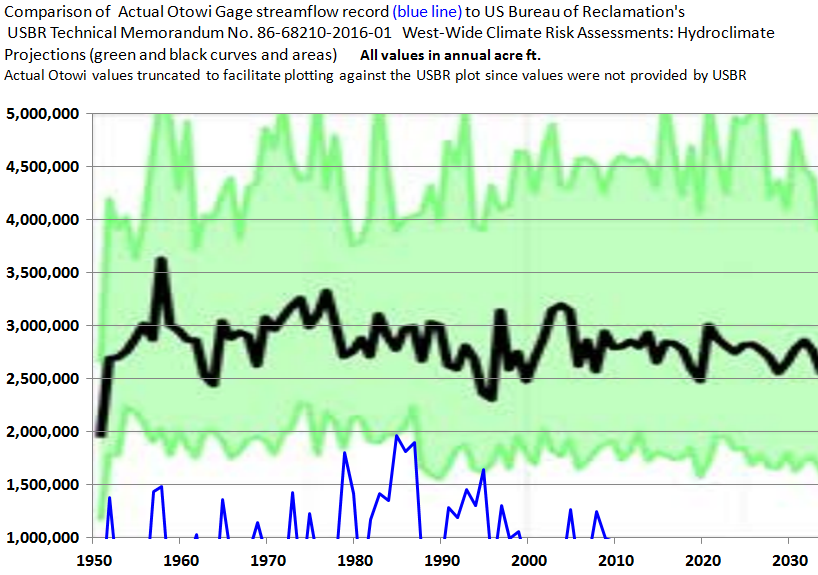
A Southern Annular Ocean Dynamo – Ozone Ring Notion
The Southern Annular Ocean (SAO) is the stormiest of all the oceans. Meanwhile Antarctica is one of the least lightning-prone continents, and its air is relatively low in humidity. This post explores some hopefully fun and thought provoking notions that relate both to the so-called ozone hole over Antarctica and to the electro-dynamo concept. I also am in this case engaging in free speculation and it wouldn’t be the first time.
For background, I’ve previously offered reasons and references why lightning may be the source of much of the ozone within our atmosphere, including over that ocean footprint. The relatively high lightning concentration across the relatively high humidity air above the SAO may be why there is a high-concentration “ozone band” which follows closely with that SAO.
I can speculate in this direction because for example, in the featured animation above, based purely on ERAI data, the highest bands of precipitation strength (darkest blues) follow the currents of the Southern Annular Ocean. One can compare the above animation to the ozone animation below. Both cover annual averages across the same hemisphere over the same years.
To me there appear to be obvious parallels in which the high ozone ring corresponds closely with the SAO air circulation. I also wonder if the massive circulation of salty (and therefore electrically-conductive) water, particles, and air within that band of augmented atmospheric moisture precipitation might be associated with a type of dynamo effect. Perhaps that is a contributing factor towards the relatively high (for oceans) lightning concentrations there.
Dynamos are widely written of with regard to attempts to understand magnetic fields associated with both the Earth and the Sun. They are also well understood with respect to man-made power generators, starting essentially with the Faraday Disk, as this Wikipedia link image [1] illustrates.
https://en.wikipedia.org/wiki/Dynamo#/media/File:Faraday_disk_generator.jpg
Note the horseshoe magnet that the electrically-conductive disk spins through. As the disk spins within the surrounding magnetic field, electricity (lightning) is produced and that is indicated by a current that extends radially outward from the center of the disk to the edge.
Is it a stretch to map this device to the Southern Annular Ocean? Maybe so, but it is entertaining to explore at least for me. Consider the spinning disk as that spinning ocean, and the Earth’s magnetic field as the horseshoe magnet. The ocean and its overlying atmosphere are electrically conductive. Moreover, the Earth’s magnetic field is orthogonal to that circulation. In other words, the magnetic field is axial, and the spinning southern ocean is zonal.
This is basically the concept, and is supported again by the generally-known observation that the ocean of concern has the greatest concentrations of storms of any of the Earth’s water bodies. The spinning Southern Annular Ocean and its overlying spinning, salty, moisturized, atmospheric circulation, align with the spinning disk of the Faraday device. The Earth’s magnetic field aligns with the Faraday horseshoe magnet. The high concentration of lightning aligns with the Faraday current.
Again, the lightning effect might then explain the band of high ozone there. In contrast, Antarctica is relatively deficient in lightning. Could it be that this simple dearth of lightning action across that continent is a reason the high ozone band doesn’t extend to the South Pole?
As I advance on this fun notion, I recognize some additional aspects which may or may not be very entertaining. I’m providing a short bullet list and I intend to return to these in later posts or perhaps in a journal submission or both:
- The “sprays” of moist air from South America and Africa, as well as from Australasia are intriguing. No doubt these come as well from lightning-rich continental regions and also bring plenty of additional airborne charged particles (dust, aerosols, soot, etc.). Perhaps they are the greatest ultimate contributors to the high intensity ozone ring in the SAO. I’ve seen at least one relevant paper, although I’m not certain the authors had this consequence in mind.
- The irreproducible claims by ozone scientists that human-manufactured halides and CFCs, exclusively, park over Antarctica for DECADES! How any scientist who has even a nominal understanding of atmospheric circulation fails to challenge this notion is beyond me.
- As Ozone Hole scientists perpetuate this absurdity (ie., that only anthropogenically produced halides can park over Antarctica forever, that they are dormant until September, when these exclusive particles/aerosols are then triggered to destroy vast quantities of ozone), they continue to completely disregard the obvious connections with moisture and lightning, and even sunlight. As some others at my favorite forum have also speculated, when Antarctica is largely hidden from the Sun over its winter (the several months that precede September) how does any relevant scientist expect ozone to be replenished there?
This is an informal opinion piece.
* The highest ozone concentrations align zonally with the highest precipitation concentrations. The greater the precipitation, likely the greater the concentration of lightning strikes.
Many thanks to my spouse for some helpful feedback.
 8428total visits,1visits today
8428total visits,1visits today



